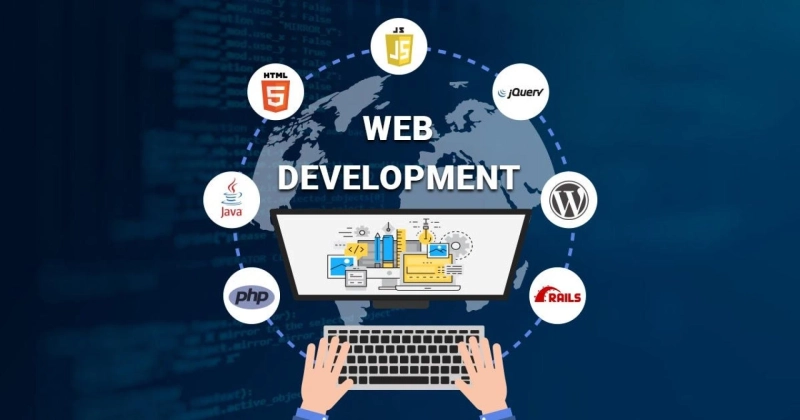Get ready to dive into the world of web development! Learn everything you need to know as a beginner to become a full stack developer.
As the internet continues to play an increasingly important role in our daily lives, the demand for Full Stack Web Developers has grown exponentially. Full Stack Web Development involves the creation of web applications that integrate both the front-end and back-end aspects of web development.
Definition of Full Stack Web Development
Full Stack Web Development refers to the creation of web applications that integrate both the front-end and back-end aspects of web development. This means that Full Stack Web Developers are responsible for developing the entire web application, from designing the user interface to implementing the database.
Why Full Stack Web Development is important
Full Stack Web Development has become increasingly important in recent years because it allows developers to create more efficient and effective web applications.
Who is a Full Stack Developer
A Full Stack Developer is a professional who is skilled in both front-end and back-end development. Full Stack Developers are responsible for designing, building, and maintaining web applications that integrate both aspects of web development.
Front-End Development
1. Definition of Front-End Development
Front-End Development refers to the creation of the user interface of a web application. This includes everything that the user sees and interacts with, such as the layout, typography, images, and buttons.
2. Front-End Languages and Tools
Some of the most common languages and tools used in Front-End Development include HTML, CSS, and JavaScript. HTML is used for creating the structure of a web page, while CSS is used for styling the page. JavaScript is used for adding interactivity and functionality to the web page.
3. Common Front-End Frameworks
Front-end frameworks are collections of pre-written code that help developers to build responsive and interactive websites or web applications more quickly and efficiently.
Back-End Development
1. Definition of Back-End Development
Back-End Development refers to the creation of the server-side of a web application. This includes everything that happens behind the scenes, such as the database, server, and application logic.
2. Back-End Languages and Tools
Some of the most common languages and tools used in Back-End Development include Java, Python, Ruby, and PHP. These languages are used to create the server-side logic of a web application and to communicate with the database.
3. Common Back-End Frameworks
Back-End Frameworks are pre-built sets of code that can be used to simplify the process of Back-End Development. Some of the most common Back-End Frameworks include Ruby on Rails, Django, and Node.js.
Full Stack Web Development Tools and Frameworks
1. Integrated Development Environments
Integrated Development Environments (IDEs) are software applications that provide developers with a comprehensive environment for developing, testing, and deploying web applications.
2. Common Full Stack Frameworks
Full Stack Frameworks are pre-built sets of code that can be used to simplify the process of Full Stack Web Development. Some of the most common Full Stack Frameworks include Angular, React, and Vue.js.
3. Version Control Systems
Version Control Systems are software applications that allow developers to track changes to their code over time. Some of the most common Version Control Systems used in Full Stack Web Development include Git and SVN.
Full Stack Web Development Process
1. Project Planning and Analysis
The first step in the Full Stack Web Development process is project planning and analysis. This involves identifying the goals of the web application, determining the target audience, and creating a plan for how the application will be developed.
2. Designing and Prototyping
The next step is designing and prototyping the web application. This involves creating wireframes and mockups of the user interface and designing the overall look and feel of the application.
3. Development and Testing
Once the design is complete, the development and testing phase begins. This involves writing the code for the front-end and back-end of the web application and testing the application for bugs and errors.
Career Paths in Full Stack Web Development
1. Full Stack Web Developer
Full Stack Web Developers are responsible for developing the entire web application, from the front-end to the back-end. They must be skilled in multiple programming languages and be able to work with databases, servers, and application logic.
2. Front-End Developer
Front-End Developers are responsible for creating the user interface of a web application. They must be skilled in HTML, CSS, and JavaScript, and be able to create user-friendly and responsive web pages.
3. Back-End Developer
Back-End Developers are responsible for creating the server-side logic of a web application. They must be skilled in programming languages such as Java, Python, or PHP, and be able to work with databases and servers.
Conclusion
In conclusion, Full Stack Web Development is a complex process that involves multiple programming languages, frameworks, and tools. It is essential for developers to have a strong understanding of both front-end and back-end development, as well as database management and project management skills. By following a structured development process and using the right tools and frameworks, Full Stack Web Developers can create high-quality web applications that meet the needs of their clients or customers.
Frequently Asked Questions (FAQs)
Q.What is Full Stack Web Development?
A.Full Stack Web Development involves the creation of a complete web application, including the front-end, back-end, and database management.
Q.What programming languages are used in Full Stack Web Development?
A.Some of the most common programming languages used in Full Stack Web Development include HTML, CSS, JavaScript, Java, Python, Ruby, and PHP.
Q.What are Full Stack Frameworks?
A.Full Stack Frameworks are pre-built sets of code that can be used to simplify the process of Full Stack Web Development. Some popular Full Stack Frameworks include Angular, React, and Vue.js.
Q.What career paths are available in Full Stack Web Development?
A.Some common career paths in Full Stack Web Development include Full Stack Web Developer, Front-End Developer, Back-End Developer, and Full Stack Web Development Manager.


